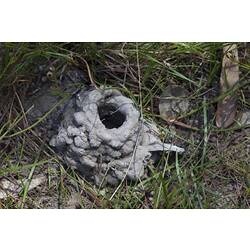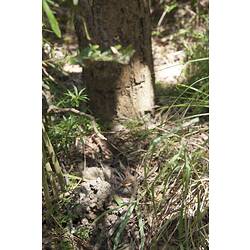General Description
Burrowing crayfishes are like miniature spiny crayfish, sharing a pair of claws on the front legs. There are many species in this group and they vary in their physical characteristics. Some species are small and hairy with a reduced abdomen, while others are smooth and look more like yabbies but more flattened from side to side. Most species are small with a body (carapace) length of 2-4 cm but can be up to 10 cm long (head to tail tip), compared to the larger Yabby which reaches 25 cm long.
Biology
The family Parastacidae that includes burrowing or land crayfish and yabbies is found only in the southern hemisphere and is most diverse in Australia. There are 35 species in the genus Engaeus. Many of these species have a quite limited geographic range and some confined only to a single catchment. Because the burrowing crayfish's habitat is threatened by land clearing and drainage many species are thought to be threatened. About 21 species occur in Victoria, with 13 being of conservation concern. Engaeus species live in underground burrows in the banks and flood plains of rivers which is where their common name of burrowing crayfish comes from. Some burrows are simple while some contain many branches and a series of chambers which may contain water. On the surface a chimney of the soil or mud excavated while digging the burrow is often present around the burrow entrance. The shape of the burrows and chimney varies according to species and depends on their habitat but can reach 40 cm tall. Some species, such as Engaeus urostrictus, live close to streams. Here they build burrows down to 25 cm deep at the level of the water table. Water fills a small chamber at the bottom of the branching burrowing system covering half a square metre. As the crayfish excavates the burrow it brings soil to the surface and places the pellets around the entrance until a chimney grows up to 13 cm high. Other species, Engaeus tuberculatus for example, live on slopes away from streams. Their burrows do not reach the water table and the subterranean chambers rely on rain or seepage to fill with water. Exit burrows diverge near the surface where there are several openings. Waste from the excavations is brought to the surface where pellets of soil are deposited and run down the slope to form a fan of dirt. The crayfish spends most of its time in the chamber at the bottom of its burrow so is rarely seen. Only at night does it become active bringing soil to the surface and foraging. It feeds mostly on decaying roots and buried plant matter, but sometimes eats worms or insects. Some species live alone but others are more communal. Male and females usually come together to mate in spring and eggs are incubated attached to the tail of the female. Juveniles hatch in mid-late summer. After hatching they may remain in their parents' burrow or migrate to start a life of their own. Because of their secret lives, remarkably little is known about their behaviour, how long they live and general life history. They are sometimes confused with yabbies but are much smaller. While yabbies are edible, the burrowing crayfish are not due to their much smaller size.
Distribution
Victoria and Tasmania.
Habitat
These crayfish only live in damp environments. They are found in swamps, on floodplains and near streams and river banks particularly in eucalypt forests or rainforests.
More Information
-
Animal Type
-
Animal SubType
-
Brief Id
Resmble small crayfish.
-
Colours
Grey, Brown, Yellow, Pink, Red
-
Maximum Size
10 cm
-
Habitats
-
Diet
Omnivore
-
Diet Categories
Plant matter, Animal matter
-
Endemicity
-
Commercial
No
-
Conservation Statuses
CITES: Not listed, FFG Threatened List: Not listed, EPBC Act 1999: Not listed, IUCN Red List: Various
-
Taxon Name
-
Scientific Author
Erichson, 1846
-
Common Name
Burrowing Crayfish
-
Phylum
-
Subphylum
-
Superclass
-
Class
-
Subclass
-
Superorder
-
Order
-
Suborder
-
Infraorder
-
Family
-
Genus














